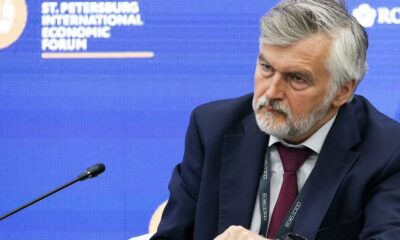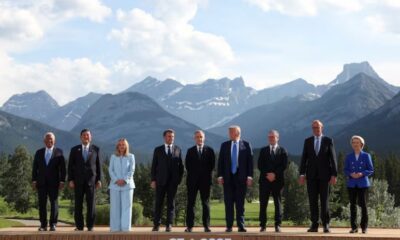Opinion
Will Israel’s move against Haniyeh change the balance in the Middle East?
Prof. Ma Xiaolin
Zhejiang International Studies University, China
Director of the Institute for Mediterranean Studies
On 1 August, a solemn funeral was held for Ismail Haniyeh, the leader of the Palestinian Islamic Resistance Movement Hamas, who was killed in an attack in the Iranian capital, Tehran. Iran’s supreme leader, Ayatollah Ali Khamenei, is reported to have ordered direct retaliation against Israel. That night, more than 60 revenge rockets were fired by Lebanese Hezbollah into northern Israel. Despite Israel’s deliberate efforts to inflame the Middle East crisis, Haniyeh’s death was not enough to bring the situation out of control.
On the night of 31 July, Haniyeh, who was in Tehran to attend the swearing-in ceremony of Iran’s new president, Mohammad Pezeshkian, was killed in a surprise attack on his residence. The Iranian government claimed that Israel was behind the assassination. The Israeli government’s press office published a portrait of Haniyeh with the words ‘wiped out’, and Prime Minister Netanyahu euphemistically declared that he had ‘dealt a devastating blow to Iranian proxies’. The Jerusalem Post quoted Israeli intelligence sources as saying that Haniyeh had been killed by a remote-controlled bomb prepared by Israelis and that Tehran had been chosen as the site of the attack to humiliate Iran.
Haniyeh’s death showed that Israel has once again flagrantly violated Iran’s sovereignty, territory and airspace, grossly violated the norms of international law and deliberately provoked a violent conflict between countries, and violated humanitarian law by physically eliminating the leader of the enemy group without due process. The Chinese Foreign Ministry strongly condemned it, as did Iran, Russia, Turkey and others. The United States claimed it had nothing to do with the incident and, together with the UK and France, blocked the adoption of a Security Council resolution condemning Israel.
Haniyeh’s assassination comes as no surprise, as Haniyeh has long been someone Israel has put a price on, hounded and officially described as a ‘walking dead’. Since 2004, Israel has killed two generations of Hamas leaders in Gaza, Ahmed Yassin and Abdel Aziz Lantis, and other Hamas military and political leaders are on the death list.
Intelligence officials say Haniyeh’s death was “specifically orchestrated in tightly secured Tehran to make it more visible and embarrassing for Iran”.
Since the start of this round of hostilities, Israel has vowed to “root out” Hamas, “cut off its branches” and even made it clear that Qatar is the only place where senior Hamas officials are “exempt from death”. In April this year, the Israeli army blew up Haniyeh’s three sons and four grandchildren, including three girls. Haniyeh was not impressed by the news. Sources say that more than 60 members of his family have died at the hands of Israel, just a fraction of the tens of thousands of Palestinians who have been killed.
Haniyeh, one of the founders of Hamas and its first Prime Minister after being elected to an autonomous legislature in 2006, is known for his relative moderation and determination and has been the leading Palestinian negotiator pushing for a ceasefire since the outbreak of the current conflict. Israel’s physical elimination of the key negotiator in the face of repeated setbacks in the talks is a clear rejection of peace talks and to keep on continuation of the state of war.
A week before Haniyeh’s death, 14 Palestinian factions had signed the landmark Beijing Declaration, in which Hamas and other radical groups announced their acceptance of the two-state solution and their recognition of the PLO as the sole legitimate representative of the Palestinian people. This was a powerful sign that, after 18 years of accepting the Oslo Accords and contesting the leadership of the autonomous institutions through elections, Hamas had once again demonstrated its willingness to reconcile and accept Israel’s legitimate existence. Israel’s current insistence on eliminating Haniyeh is an attempt to block the path to intra-Palestinian reconciliation and to further divide and weaken the Palestinian camp in order to exploit it in the long term, maintain the status quo and reject the two-state solution.
After Haniyeh’s assassination, Hamas announced a freeze on ceasefire and hostage exchange talks, reiterated that it would “never recognise Israel” and would fight to the end, which is exactly what the Israeli government expected, justifying its insistence on “cleansing, disarming and de-extremising Hamas” in Gaza.
After these twists and turns, it is expected that the Palestinian-Israeli conflict will be the main battleground in Gaza, that the war will remain low-intensity and protracted, that Hamas and other armed groups will continue to use guerrilla warfare to attack Israel, that its regional allies will continue to hunt Israel, and that Israel’s state of war will continue and the opposition’s “showdown” with Netanyahu will be postponed indefinitely.
Israel’s pursuit of Haniyeh in Tehran, following its air strike on the Iranian consulate in Syria in April this year, is another blatant violation of Iranian airspace, territory and sovereignty, openly provoking, threatening and even humiliating the Iranian leadership. The Israeli cross-border bombing of the consulate triggered symbolic and punitive Iranian long-range air strikes, but the two sides settled the score and applied the brakes in time to prevent the Israeli-Palestinian conflict from spreading to the entire Eastern Mediterranean region and then to the Persian Gulf, “the world’s oil depot”.
Israel’s attack was a step too far, which made Iran want to stop and made the international community worry about whether Israel and Iran would again come into direct confrontation. In addition, the day before, Israel bombed and killed Fouad Shukr, one of the most senior members of Lebanese Hezbollah. Hezbollah has vowed to avenge Shukr and Haniyeh, and the Houthis have made similar statements. Israel is creating a major incident by stirring up several hornets’ nests at once.
However, Hamas does not have the power to fight fire with fire against Israel, Iran will not impulsively enter into a full-scale war with Israel, and Hezbollah will refrain from triggering a third Lebanon war. Nor does Israel have the will or the ability to launch a large-scale “northern campaign” and get into an even bigger quagmire. The US has reaffirmed its commitment to protect Israel as it enters a critical phase of the elections, but has also urged Israel not to “add fuel to the fire”. In short, Haniyeh’s death will not significantly alter the regional situation.
Haniyeh is a key figure in Hamas and the last name on Israel’s “hit list”. But in the grand scheme of the Middle East conflict, Haniyeh is a minor figure who died an unnatural death, and many leaders have died before him: King Abdullah of Jordan (1951), President Sadat of Egypt (1981), President Gemayel of Lebanon (1982) and Prime Minister Karami (1987), PLO number two Abu Ghad (1988), President Mouawad of Lebanon (1989), Prime Minister Rabin of Israel (1994), Prime Minister Hariri of Lebanon (2005)…
Haniyeh will be neither the first nor the last leader to die in the region.
The question is: how long can Israel, which is not a great power, survive against the “Axis of Resistance” made up of Iran and four regional armies?
* Prof. Ma, who knows the Middle East well, has worked for many years as a senior Xinhua correspondent in Kuwait, Palestine and Iraq. His academic studies focus on the Middle East, Arab geography and China-Middle East relations.
Opinion
Is Israel done with ‘the devil it knows’?

As someone who has wanted to bomb Iran for nearly 30 years, it’s not hard to understand that Israeli Prime Minister Benjamin Netanyahu has his own agenda and is using claims of Iran developing nuclear weapons as a pretext. This demonization campaign has been quite long-running. Even in the 1990s, he persistently made this claim, which had no basis in fact. In fact, US intelligence reports at the time clearly showed this claim to be false. The most recent US intelligence report, published this past March, says the same thing. Despite this, Netanyahu persists with his claims, wildly exaggerating them. One of his latest claims is that Iran will build nuclear weapons and distribute them to terrorists.
Iran’s right to a peaceful nuclear program, conducted with full transparency under the supervision of the International Atomic Energy Agency [IAEA], should be considered a normal state of affairs. Indeed, in 2015, under President Obama’s leadership, the US and the UK supported this agreement, and it was signed. At the time, Iran also stated that it had no nuclear weapons program and welcomed being fully open to inspections.
When Trump took office in 2017, he withdrew from this agreement in 2018—likely due to pressure from the Israel lobby in the US—plunging everything back into uncertainty. Trump’s “maximum pressure” policy, on the contrary, pushed Iran to increase its uranium enrichment activities. It is extremely interesting and confusing that Trump, having withdrawn from a previously agreed-upon deal during his first term, would now strive to return to it in a potential second term. It would be naive to think that Trump has learned from the past and wants to correct his mistake.
It is very clear that Israel, under Netanyahu’s leadership, wants to topple the Iranian regime using the nuclear program as a pretext. It is advancing toward this goal step by step, virtually paralyzing opposing forces and preventing them from offering any meaningful response. At this point, it is also moving away from the typical Western approach of preferring “the devil you know.”
The pretext of nuclear bombs instead of weapons of mass destruction
An attempt to bring about regime change in a Middle Eastern state was also made 20 years ago in Iraq. We witnessed the horror created by the Iraq plan, which led to the rise of ISIS and the deaths of millions. At the time, US Secretary of State Colin Powell, in his speech at the UN, said, “Saddam Hussein has chemical weapons. Saddam Hussein has used such weapons and has no qualms about using them again against his neighbors and his own people.” In his presentation, Powell used reconnaissance photos, detailed maps and charts, and even recorded phone conversations between high-ranking members of the Iraqi army. The phrase “weapons of mass destruction,” which he repeated 17 times during his hour-long speech, accompanied by information that intelligence officials had assured him was reliable, became the public justification used by the Bush administration to legitimize the invasion of Iraq.
A month and a half after Powell’s UN speech, President Bush ordered airstrikes on Baghdad. In a televised address to the nation, Bush said this was the beginning of a military operation “to disarm Iraq, to free its people, and to defend the world from grave danger.” US forces, along with their internal collaborators in Iraq, overthrew the Saddam Hussein regime within a few weeks, and evidence of Iraq’s so-called “weapons of mass destruction” was nowhere to be found.
The Bush administration used the credibility of Colin Powell—known for his opposition to war, particularly US military interventions in the Middle East—to bring about regime change in Iraq. Powell later described his UN speech as a “major intelligence failure” and a “blot” on his record. Before he died, Powell expressed his regret, admitting that his sources had turned out to be wrong, flawed, and even deliberately misleading.
If Israel succeeds in neutralizing Iran—and perhaps even turning it into an ally in the medium to long term—guess which conventional power in the region will be its next target? Efforts to demonize Türkiye have been underway for a long time, although they are currently on the back burner. A bilateral confrontation in the region would unfold on a very different footing than a trilateral balance; we had better take precautions and fasten our seatbelts.
Middle East
An assault on the Axis of Resistance: The Israeli escalation against Iran and its impact on Palestine and Gaza

Khaled al-Yamani, Popular Front for the Liberation of Palestine (PFLP)
Events in the region are accelerating as if we are on the brink of a new political and security earthquake, led by the direct confrontation between the Islamic Republic of Iran and the Zionist entity, under blatant American complicity. This confrontation, though it appears to be military and security-based, is in essence a major war targeting the entire project of resistance — from Tehran to Gaza.
Latest escalation: Aggressive maneuvers in the name of ‘Israeli security’
The Zionist entity launched an aerial assault targeting military sites deep within Iranian territory. Under recycled pretexts — related to Iran’s nuclear and missile programs — “Israel” continues its strikes, not only against Tehran, but also against its allies in Syria, Lebanon, Iraq, and Yemen.
But what’s happening isn’t just “preemptive strikes” as Western media claims — it is the continuation of a long war waged by the United States and “Israel” against the Axis of Resistance, aiming to break the balance of deterrence established by Iran and its allies after years of strategic patience and military development.
America and Israel: One goal behind false slogans
This escalation cannot be separated from direct American direction. The Biden administration, though claiming to seek de-escalation, in practice provides full political, military, and intelligence cover for this aggression.
The goal is clear: to dismantle the Axis of Resistance and deprive Iran of any ability to support its allies — first and foremost, the Palestinian resistance factions.
The U.S. administration knows that Iran’s strength does not lie solely in its nuclear program, but in its presence in the regional equation — from Lebanon to Iraq to Palestine. Therefore, striking Iran means breaking the backbone of the Jerusalem Axis.
What does Gaza and Palestine have to do with this?
Any attack on Iran is, by extension, an attack on Gaza. What is plotted in Tehran reflects immediately in the alleys of Khan Younis and the Jabalia refugee camp. The rockets that overwhelmed the Israeli army during the “Al-Aqsa Flood” battle would not have reached the resistance without decades of accumulated Iranian support.
Now, the Zionist entity — with American backing — seeks to cut off the lifeline to Palestine and destroy the support network Iran has built for the resistance, whether in weapons, knowledge, or training.
Thus, striking Iran is not separate from the ongoing aggression on Gaza; it is a direct extension of it, and part of the suffocating siege aimed at weakening the Palestinian people’s ability to endure and resist.
The Axis of Resistance: Unity of fronts and a shared fate
The new equation imposed by the Axis of Resistance after the “Sword of Jerusalem” battle — and later the “Al-Aqsa Flood” — has become a nightmare for the enemy: the unity of fronts. No longer is Gaza alone, or the southern suburbs alone, or Sanaa alone.
Hence, the Zionist entity is now trying to preempt any emerging united front by striking at the center — Iran — before a full-scale confrontation erupts that could spell the end of “Israel” as we know it.
Conclusion: The battle continues… and Palestine remains the heart
We are facing a pivotal moment in the history of this struggle. The enemy seeks to paralyze the Axis of Resistance at its strategic core and turn the conflict into a fight for survival. Yet the Axis today is stronger than ever.
Despite the wounds, Gaza remains at the heart of this confrontation. The battle is not just being fought in Iranian territory or over the skies of Lebanon and Syria — it is being fought over the future of Palestine, from the river to the sea.
Therefore, it is the duty of all the free people of the world, and all honest journalists, to speak the truth.
If Israel emerges victorious from its ongoing confrontation with the Islamic Republic of Iran, the consequences of that victory will not be limited to Tehran or the Axis of Resistance alone. Rather, they will extend to impact the entire regional balance of power — with Türkiye’s role at the center of that shift.
An Israeli victory would, in effect, cement its dominance as an unchallengeable military force in the Middle East, fully backed by the United States. This would open the door to a new phase of political interference and pressure, especially against regional powers that still maintain a degree of independent decision-making — chief among them, Türkiye.
Türkiye, which seeks to maintain an independent and balanced role between East and West, and whose interests are intertwined with Russia, Iran, and Central Asian countries, would come under increasing pressure to reposition itself according to Israeli-American terms. It may find itself facing two options: either submit to the new regional equation, or enter an unwanted political — and possibly security — confrontation.
From this perspective, what is happening in Tehran today is not isolated from what could happen in Ankara tomorrow. If Iran falls as an independent regional power, Türkiye may be next in line.
The assault on Iran is an assault on Palestine. Defending Tehran is defending Jerusalem.
This battle has strategic implications not only for the Palestinian cause and the Axis of Resistance against Zionist-American hegemony, but its outcomes will extend across the entire region — particularly affecting major regional powers such as Türkiye, Iran, and Egypt.
If Iran stands firm and emerges victorious in this confrontation, it will strengthen the role of these countries in resisting Zionist arrogance and domination. One could even say that such a victory may bring an end to Zionist hegemony over the region and, as a result, weaken American influence as well.
It would allow these countries to become more independent and distant from U.S. control, which seeks to turn the peoples of the region into subjects by dividing them into warring sects and identities. Therefore, solidarity among these countries at this moment is one of the key elements of victory — and a potential beginning of liberation from Zionist-American domination.
Opinion
Can China Do More Than Condemn Israel?
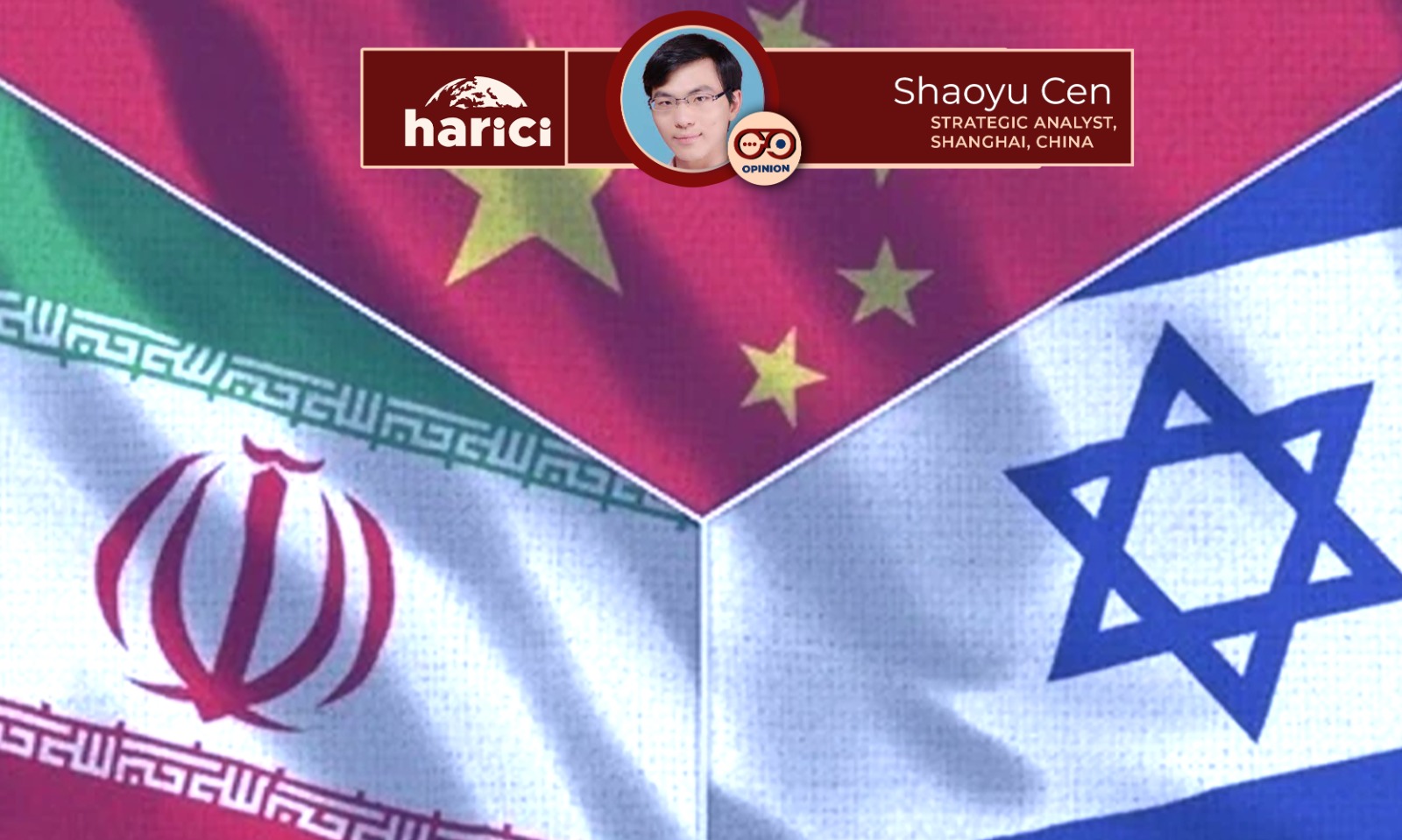
Iran suffered a heavy blow from Israel. During the first 12 hours of the attack, it even couldn’t fight back. In the wake of the sudden raid, there is increasing global discussion about potential mediators who might help de-escalate the situation. Some voices suggest that China, having played a key role in reconciling Saudi Arabia and Iran in 2023 and organizing a dialogue between Palestine fractions in 2024, could step into this new crisis as a peacemaker.
However, while China’s diplomatic achievements in the Middle East deserve recognition, it is a serious overestimation to assume that Beijing can—or should—be expected to resolve every conflict in the region. At least, not now. The Israel-Iran conflict is fundamentally different in scope, depth, and international entanglement. To understand why, it is crucial to examine both the capabilities and limitations of China’s role in Middle Eastern affairs.
The US Can’t Be Bypassed
China’s mediation in 2023 that led to the normalization of relations between Saudi Arabia and Iran was heralded as a diplomatic breakthrough. It showcased Beijing’s growing influence in a region long dominated by U.S. security interests. The agreement was emblematic of China’s preferred diplomatic style—low-key, pragmatic, and built on economic incentives and mutual respect for sovereignty.
However, the success of the Saudi-Iran rapprochement was made possible by a unique alignment of interests. Both Tehran and Riyadh had compelling internal reasons to reduce tensions. Saudi Arabia wanted a calm environment for Vision 2030 and economic transformation, while Iran was under pressure from domestic unrest and economic sanctions by the West. In this case, China acted more as a facilitator than an enforcer.
This experience cannot simply be applied to the current Israel-Iran conflict. First, the conflict between Israel and Iran is not just a bilateral rivalry but a multi-dimensional standoff involving proxy forces, ideological opposition, nuclear tensions, and deep historical hostility. Second, Israel is closely aligned with the United States, a global competitor to China, complicating Beijing’s ability to act as a neutral intermediary.
For decades, Israel has been a central pillar of U.S. policy in the Middle East—not just as a security partner, but as a forward position against the rise of any rival or “non-rival” regional powers such as Iran, Iraq, Egypt, and even Turkey and Saudi Arabia. In this context, any attempt by China to mediate would be interpreted in Washington not as a neutral peace initiative, but as a geopolitical maneuver that challenges American primacy in the region.
Even if China were to act with genuine impartiality, its growing involvement would inevitably be seen through the lens of great-power competition. A meaningful intervention cannot bypass the United States, and would likely trigger strong diplomatic push back. This turns the crisis from a bilateral issue or trilateral dialogue with China in it, into a four-party interaction—China, the U.S., Israel, and Iran—each with distinct agendas and red lines, further reducing the space for effective mediation.
Moreover, the domestic political situation within Israel adds another layer of complexity that China—or any external actor—must contend with. Prime Minister Benjamin Netanyahu has faced significant political turmoil in recent years, including corruption trials, mass protests over judicial reform and his Gaza policy, and divisions within his governing coalition. Many of his foreign policy decisions, including this attack on Iran, are widely seen as being driven more by short-term political calculations than by coherent national strategy. Even Washington post said so, too. This level of internal political instability makes it extremely difficult for external powers like China to engage in sustained, high-level diplomacy with reliable counterparts or long-term commitments.
Iran’s Willingness: A Prerequisite
Another factor that limits China’s potential role is Iran’s own willingness—or lack thereof—to accept Chinese mediation in a conflict where national survival and regional dominance are at stake. While Iran appreciates China as a strategic partner in trade, energy, and diplomatic support at the United Nations, it does not necessarily see Beijing as a military or security guarantor.
When mediating between Saudi Arabia and Iran, security guarantees were not necessary, as neither side truly believed the other would launch a direct attack. Moreover, Iran-backed forces in Yemen had even gained some advantage in their asymmetric conflict with Saudi Arabia and its allies. However, in the face of an increasingly unrestrained Israel, effective mediation is likely to require real security guarantees. Yet for China—already facing direct military pressure from the United States—offering such guarantees abroad would be an unaffordable luxury.
Moreover, the types of support China can offer—diplomatic pressure, economic aid, or even military technology—are only valuable if Iran sees them as credible and effective. In the future, what China can provide is not the security guarantee but a package of advanced defence system. This is where a critical reality intrudes: Iran may not have sufficient confidence in the practical utility of China’s military systems.
Although Iran’s air force has engaged in multiple overseas operations, its air fleet is outdated. Years of involvement in counter-terrorism campaigns against ISIS have also diverted its development focus away from achieving air superiority. Iran’s air defense systems, while more advanced and numerous than those of most countries—and supported by a domestic capacity to produce air-defense radars and missiles—still fall short when facing top-tier adversaries. The division of these systems between the Iranian Army and the Islamic Revolutionary Guard Corps further complicates coordination and effectiveness.
Modern warfare has evolved rapidly. Effective defense now requires advanced stealth fighters, advanced radar integration, electronic warfare, satellite data, and real-time coordination with air superiority assets—capabilities that Iran has not yet fully developed.
The recent aerial conflict between Pakistan and India demonstrated the effectiveness of China’s fighters, long-range air-to-air missiles, and integrated air defense and warning systems. Although the J-10CE is not China’s most advanced fighter, within a well-coordinated system, it successfully engaged and shot down India’s French-made Dassault Rafale using PL-15 missiles.
Of course, the Israeli Air Force is far more advanced and experienced than India’s, and this time it is authorized by the U.S. to deploy stealth F-35s. However, the reality remains that the People’s Liberation Army is preparing for the possibility of U.S. intervention in a future conflict over Taiwan. Countering the U.S.’s F-22s and F-35s is one of the central considerations in this scenario. If Iran aspires to effectively counter Israeli F-35s in the future, it will have very limited options other than China.
However, even Pakistan, a longtime Chinese ally with deep military cooperation ties, has shown caution in relying solely on Chinese defence system not many years ago. The fact should give pause to those who believe Iran will immediately trust Beijing to reshape its military-building decisions.
Regional Perceptions and Misconceptions
Another dimension often overlooked is how China is perceived by other regional actors. In much of the Middle East, China is respected as an economic power but not necessarily trusted as a security actor. It has no military alliances in the region, no history of enforcing peace, and only limited experience managing wartime diplomacy. Its military base in Djibouti remains its only overseas installation, and while it participates in joint exercises, China generally avoids entanglements in conflicts.
This low-profile strategy aligns with China’s broader foreign policy principles: non-interference, strategic patience, and economic focus. But these same principles limit its leverage in crises that demand rapid response, force projection, or hard security guarantees.
All of the perceptions are right. But the foundational idea of it is always misconceived. First, China itself suffered deeply under Western imperial powers for over a century. As a result, it harbors no desire to become a new hegemony in the Western mold—a stance that also aligns with its foundational communist ideology.
Second, China’s leadership draws lessons not only from its own long and turbulent history, but also from global historical patterns, particularly the rise and decline of Western powers. Perhaps the most important insight is that nearly every great empire ultimately collapsed due to overreach.
Providing security guarantees in regions thousands of kilometers away could mark a dangerous first step toward such overextension. In contrast, selling military systems—while somewhat strategic if including stealth fighters J-35 and the most advanced surface-air missiles—is far less risky and remains within the bounds of manageable influence.
This is not to say that China should remain entirely passive. Beijing can and should use its diplomatic weight to call for restraint, support ceasefire initiatives through the UN, and maintain backchannel communications with Tehran and potentially with Israel. It can also support reconstruction efforts, offer humanitarian aid if necessary, and promote regional economic integration as a long-term peace strategy.
But none of these measures should be mistaken for the kind of high-stakes crisis diplomacy needed to stop an active military confrontation. That type of intervention requires somewhat coercive tools that China currently lacks and even if it has, it could be unwilling to use.
In sum, the idea that China should intervene decisively in the Israel-Iran conflict overlooks the structural realities of modern geopolitics. While China’s growing presence in the Middle East gives it more diplomatic clout than ever before, it should not be overestimated.
-

 Diplomacy6 days ago
Diplomacy6 days agoFormer diplomat warns forcing Iran out of the NPT is the greatest danger
-

 Opinion2 weeks ago
Opinion2 weeks agoEuropean defense autonomy and Germany’s military role enter a turning point
-
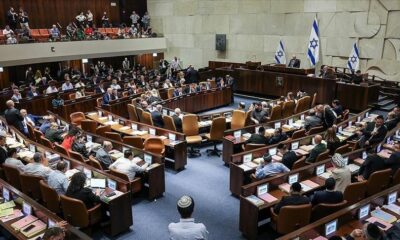
 Middle East1 week ago
Middle East1 week agoNetanyahu’s government survives no-confidence vote as Haredi crisis is delayed
-
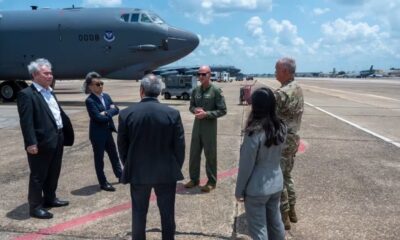
 Asia1 week ago
Asia1 week agoJapan, US showcase B-52 bombers in nuclear deterrence dialogue
-

 Diplomacy6 days ago
Diplomacy6 days agoFormer CIA analyst says Israel used ceasefire talks as a trap
-
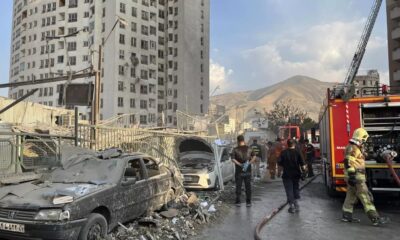
 Middle East1 week ago
Middle East1 week agoIsrael strikes Iran’s nuclear program, killing high-level commanders
-

 Europe1 week ago
Europe1 week agoBrussels prepares to sanction two Chinese banks over Russia ties
-
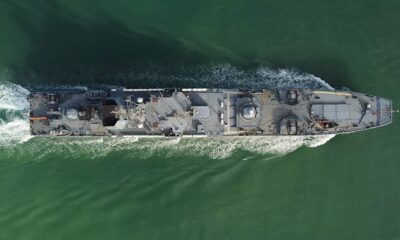
 Russia1 week ago
Russia1 week agoRussia outlines naval development plan through 2050


